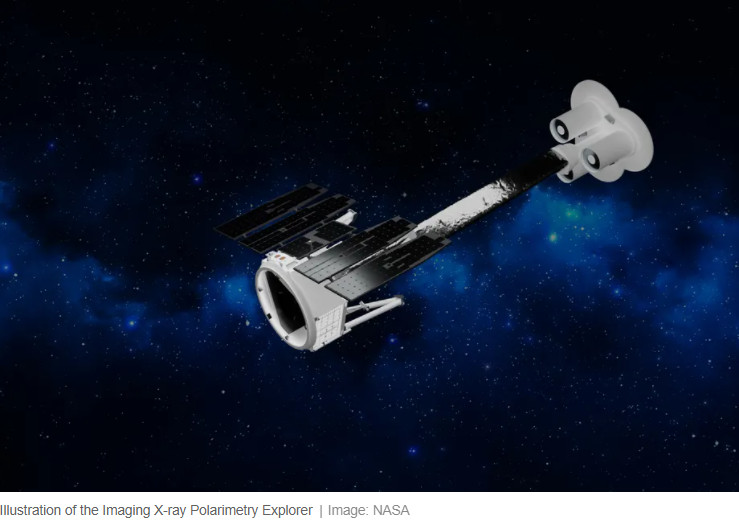
Science
NASA announces the launch of a new X-ray mission to explore black holes and exploding stars.

NASA's Imaging X-ray Polarimetry Explorer (IXPE) was successfully launched into orbit on Thursday morning on a SpaceX Falcon 9 rocket. NASA's two-year mission, a collaboration with the Italian Space Agency, is the agency's first dedicated to investigating and quantifying X-ray polarization.
The ground-breaking mission will enable NASA to investigate the origins of X-ray radiation, a kind of high-energy light produced during some of the most severe astronomical occurrences, such as supernova explosions and catastrophic collisions. The project expands on the work of NASA's flagship X-ray astronomy mission, the Chandra X-ray Observatory, which debuted in 1999 and has studied the remnants of destroyed stars, detected black holes, and more. The IXPE will shed further light on the astrophysical processes that Chandra has previously investigated.
According to NASA, the IXPE will begin operations in January. IXPE will examine around 40 celestial objects during its first year, followed by extensive follow-up studies in its second year.
The IXPE mission consists of three identical telescopes with mirrors that will capture X-rays emitted by astronomical objects such as supermassive black holes and concentrate them onto detectors capable of measuring their polarization. Polarized light is light with all of its vibrations aligned in a single direction, as opposed to visible light from a lightbulb, which scatters in all directions. Astronomers can learn more about the environment it originated from and travelled through on its journey across the cosmos by examining its attributes.
According to NASA, the project will reveal long-awaited answers to problems such as how black holes spin, whether our galaxy's black hole was actively feeding on surrounding material in the past, and why pulsars release so much X-ray radiation.
The IXPE observatory broke from the rocket around 33 minutes into the mission before unfolding its solar arrays and entering an orbit near the Earth's equator. NASA stated in a news release that mission operators got the first piece of telemetry data from the spacecraft forty minutes after launch.
Though overshadowed, the IXPE launch represents a big win for NASA as the agency prepares for the launch of the James Webb Telescope on December 22nd, NASA's next major eyes in the sky.
